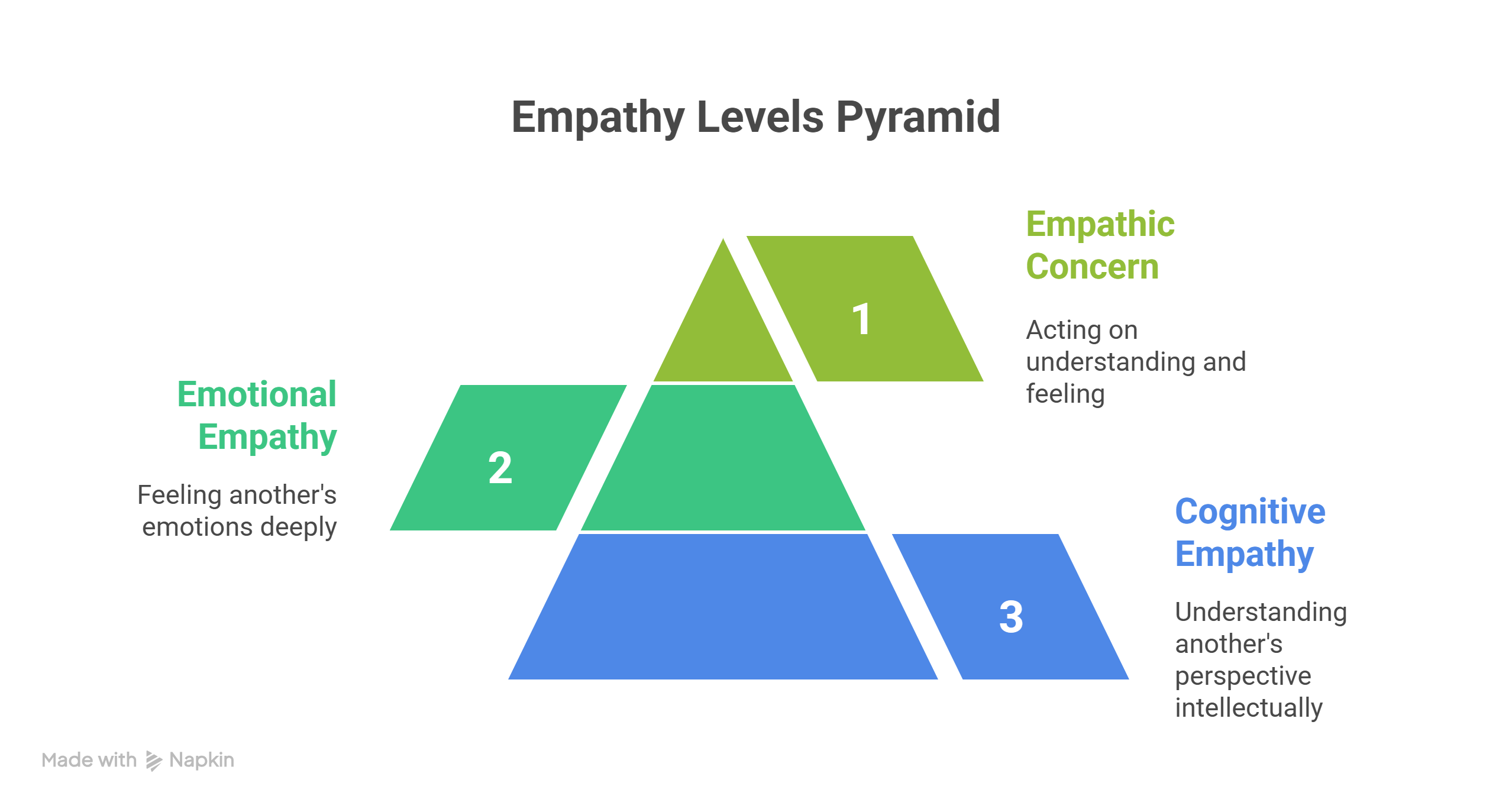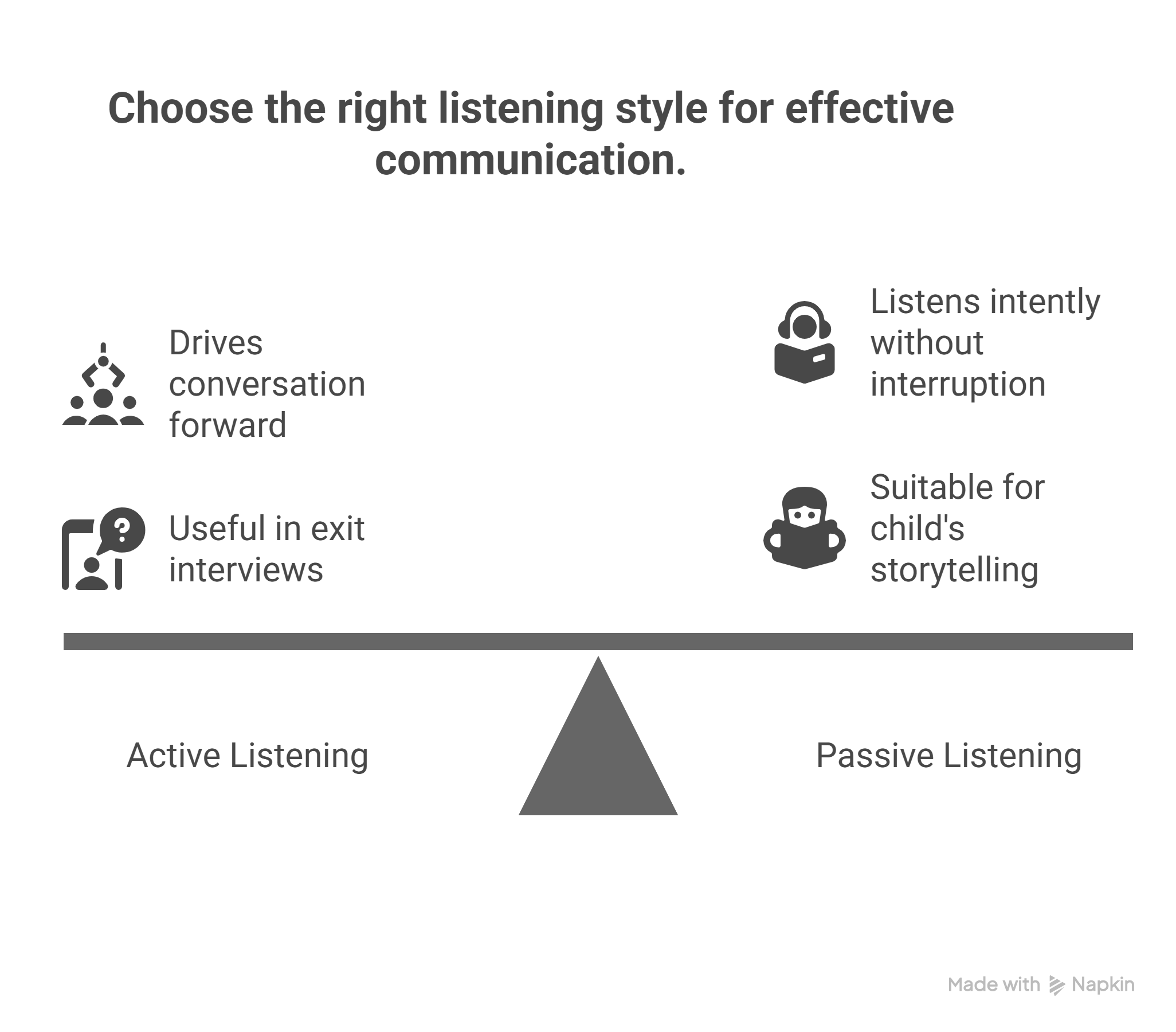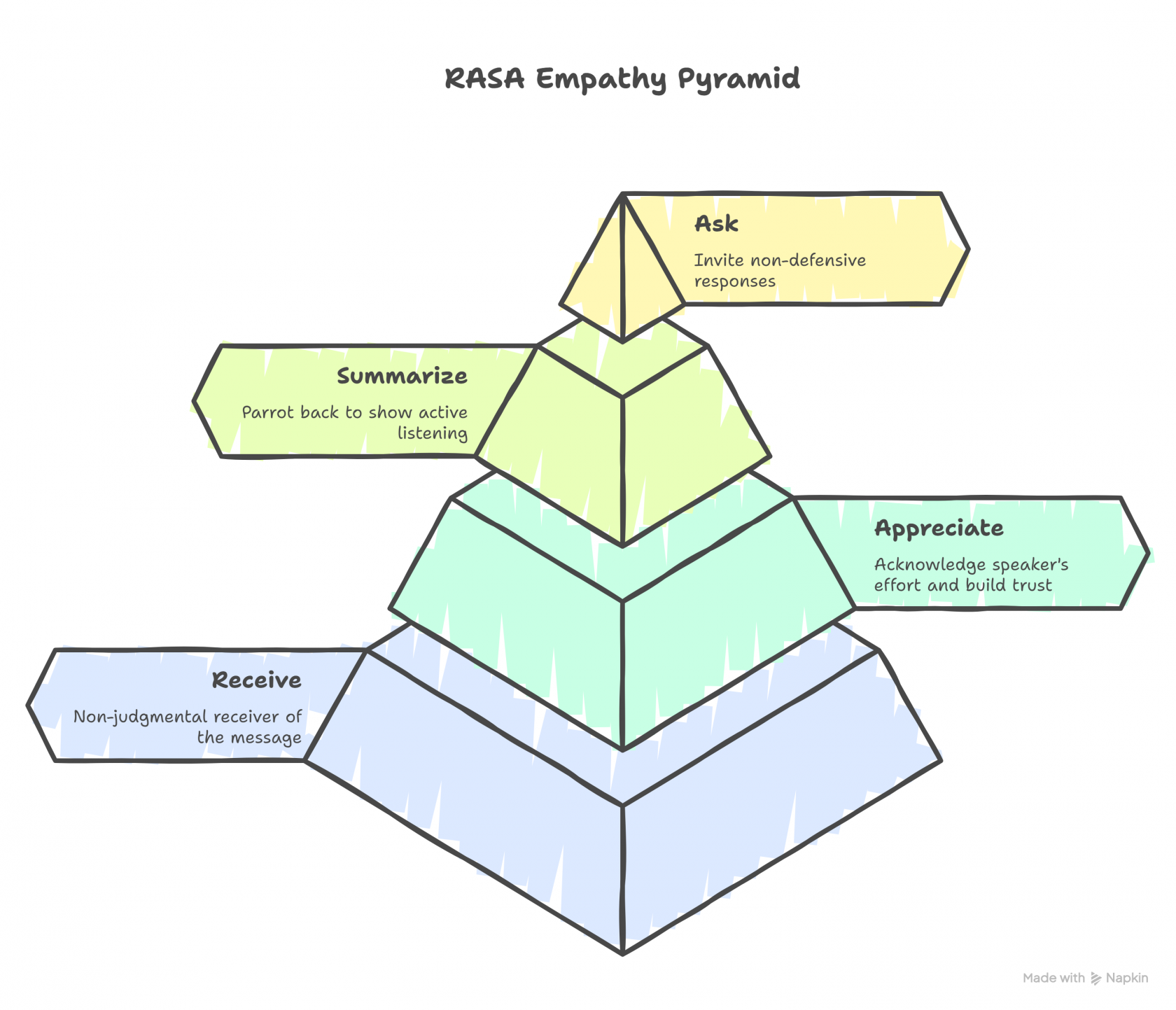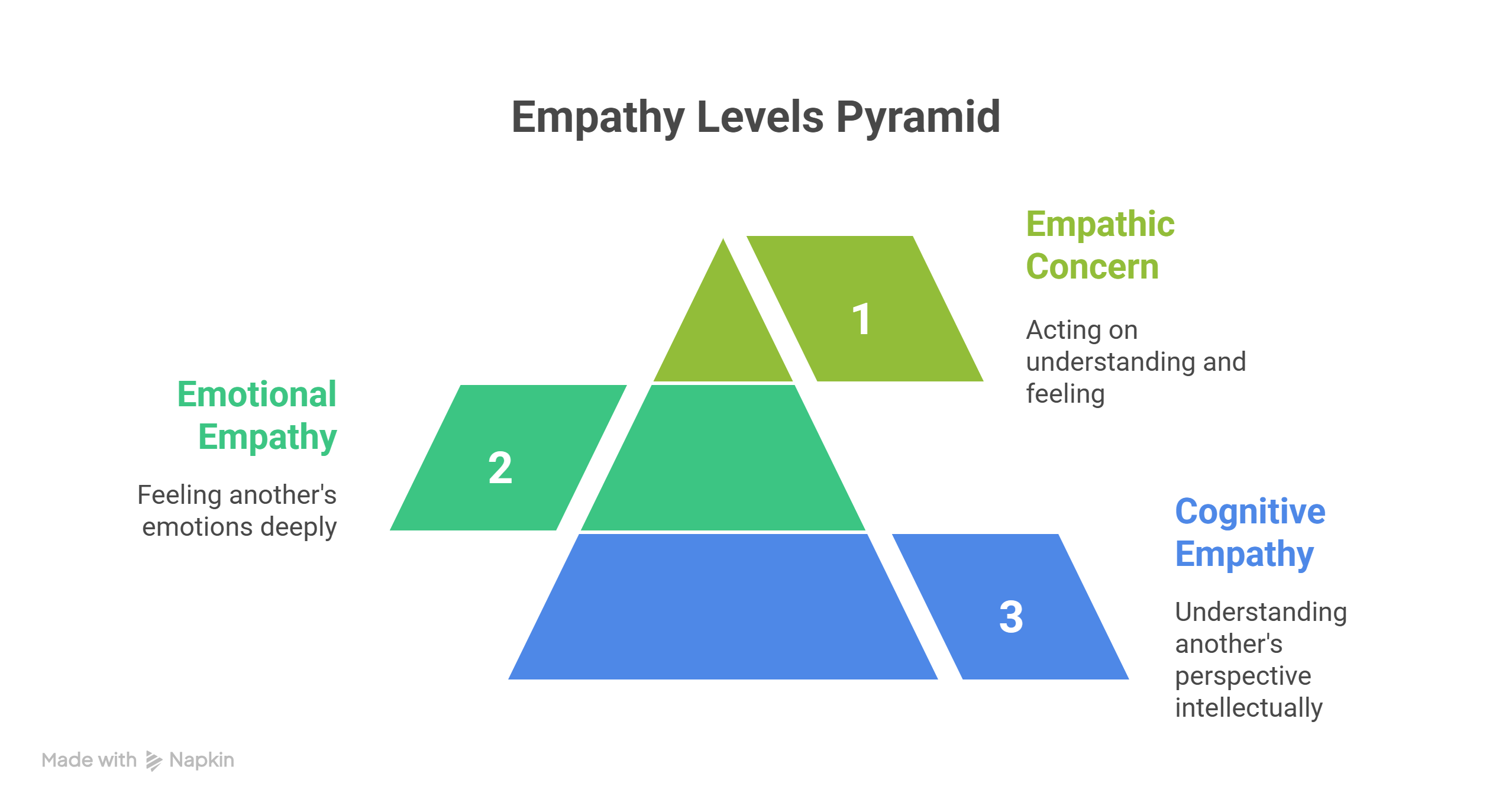Empathy
Empathy in Design Thinking
Empathy is a core skill in design thinking, defined not just as understanding someone's problems, but as a more profound ability to feel and act on their behalf. Daniel Goleman's emotional intelligence model helps break down empathy into different levels.
Levels of Empathy
According to Daniel Goleman, there are three levels of empathy:
- Cognitive Empathy: This is the intellectual ability to understand another person's perspective. A call center agent who listens to a customer and comprehends their problem is using cognitive empathy. While important, it is not sufficient because it lacks action.
- Emotional Empathy: This is the ability to feel what another person feels. For example, when a friend shares their pain and you feel it with them. This level moves beyond just understanding to a deeper emotional connection.
- Empathic Concern: This is the highest form of empathy. It combines both understanding and feeling, but adds the crucial element of action. A counselor, for example, listens and understands a client's pain but also suggests a path forward to fix the problem. Empathic concern is vital for leaders, as they have the power to act on the problems they understand and feel. Without this concern, empathy can feel inauthentic, leading to a breakdown of trust.
An example of emphatic concern is Amazon's policy of immediately refunding a customer for the unused portion of their annual Prime membership upon cancellation. This shows a commitment to the customer's needs beyond just holding onto their money.
The Art of Listening
Empathy is rooted in the skill of listening. As Stephen Covey noted, most people listen with the intent to reply, not to understand. Becoming a good listener is an underrated skill that builds trust and rapport. Bill Clinton is cited as an example of a leader who was an excellent listener, making people feel like they were the most important person in the room. This is known as reverse charisma—putting the spotlight on the other person.
There are different types of listening, each with an appropriate context:
- Active vs. Passive Listening: Active listening involves driving the conversation by asking probing questions, while passive listening is about listening intently without interruption. Passive listening is appropriate when a child is recounting their day, while active listening is more useful during an exit interview to uncover deeper reasons for an employee's departure.
- Reductive vs. Expansive Listening: Reductive listening aims to summarize and conclude, while expansive listening seeks to gather more information and explore possibilities. A good counseling session starts with expansive listening and ends with reductive listening to conclude the session.
- Critical vs. Empathetic Listening: Critical listening focuses on logical coherence, as a police officer might do during an interrogation. Empathetic listening, on the other hand, prioritizes understanding feelings over logical consistency, which is crucial when listening to an aging parent.
The RASA Technique for Empathy
Julian Treasure's RASA technique is a practical framework for improving listening skills and cultivating empathy.
- R - Receive: Be a non-judgmental receiver of the message. Maintain eye contact and allow the speaker to feel heard. Avoid the insecurity of constantly interjecting with your own stories.
- A - Appreciate: Acknowledge the person's effort in speaking to you. Appreciation validates the speaker and builds trust, making them more willing to share their real problems. This is crucial for getting past surface-level "symptoms" and reaching the true "meat" of the problem.
- S - Summarize: Parrot back what you've heard to show you were listening and to fill in any information gaps.
- A - Ask: Ask questions that invite a non-defensive response, such as "What happened?" instead of "Why were you late?".
Three Practical Tips for Cultivating Empathy
- Listen with Intent: Focus on understanding, not just replying.
- Observe with Purpose: When observing, do so with the intent of identifying areas for improvement or new insights.
- Defer Your Judgment: Avoid being judgmental. Judging others is a fruitless exercise that weighs you down and prevents you from seeing people and situations objectively. As the saying goes, "every saint had a past, and every sinner has a future". A person's behavior is often contingent on their current environment. By separating a person from their behavior, you can remain non-judgmental and gain a clearer perspective.




